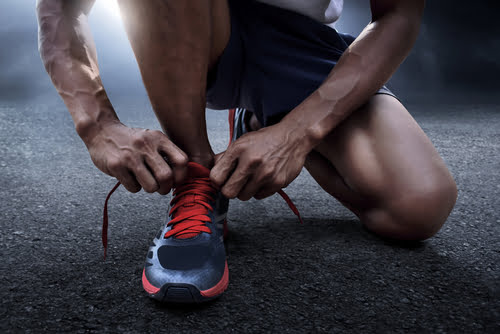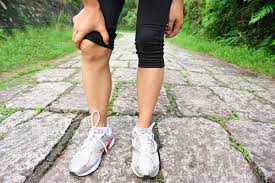Strength Training for Runners
 Exercise is commonly broken down into two categories, strength training (developing and building muscle) and ‘cardio’ (training the body’s ability to convert oxygen into energy for movement). One of the most common and easily accessible activities to help with cardiovascular training is running, it’s cheap in that you only need a pair of trainers and it’s easy to find somewhere to do it (basically outside). In the 1980s jogging became hugely popular, and this has continued to where we are today with the popularity of the Parkrun, Couch to 5km, and the increase in endurance events such as Tough Mudder events, marathons and extreme ultra-marathons ranging to up to 100 miles in a day.
Exercise is commonly broken down into two categories, strength training (developing and building muscle) and ‘cardio’ (training the body’s ability to convert oxygen into energy for movement). One of the most common and easily accessible activities to help with cardiovascular training is running, it’s cheap in that you only need a pair of trainers and it’s easy to find somewhere to do it (basically outside). In the 1980s jogging became hugely popular, and this has continued to where we are today with the popularity of the Parkrun, Couch to 5km, and the increase in endurance events such as Tough Mudder events, marathons and extreme ultra-marathons ranging to up to 100 miles in a day.
As running is a high impact repetitive activity injuries are common, most at risk of injury are beginners, this is thought to be due to increasing training load too quickly (running too far/fast too soon) or an inability to recognise when a problem occurs (running through pain), as well as inadequate preparatory work to strengthen the body to cope with the demands of running (1). The most common injuries seen in runners are, unsurprisingly, lower body injuries such as plantar fasciitis, runner’s knee, and various Achilles problems. This article is not intended to address each individual condition but to inform on one way to avoid the most common injuries, namely strength training for running.
 Running requires a lot more strength than walking. This is mainly due to the fact that walking is the alternate placing of one foot in front of the other, separated by a moment where both feet are in contact with the ground (stance phase), in running there is one part of the stride ‘flight phase’ where both feet are off the ground. The slower you run the more there is a stance phase, the faster and longer your stride becomes, the longer the flight phase is. Due to the increased load going through one leg during the running stride the ability of the body (especially the hips, knees and ankles) more strength is needed to avoid breakdown and injury (2). A lack of strength can result in patterns such as over pronation of the foot (dropped arch), valgus knee patterns (the knee collapsing inwards) and lateral tilting of the pelvis (as in the picture). All of these patterns can contribute to injury rates, especially in people who have just started running (3).
Running requires a lot more strength than walking. This is mainly due to the fact that walking is the alternate placing of one foot in front of the other, separated by a moment where both feet are in contact with the ground (stance phase), in running there is one part of the stride ‘flight phase’ where both feet are off the ground. The slower you run the more there is a stance phase, the faster and longer your stride becomes, the longer the flight phase is. Due to the increased load going through one leg during the running stride the ability of the body (especially the hips, knees and ankles) more strength is needed to avoid breakdown and injury (2). A lack of strength can result in patterns such as over pronation of the foot (dropped arch), valgus knee patterns (the knee collapsing inwards) and lateral tilting of the pelvis (as in the picture). All of these patterns can contribute to injury rates, especially in people who have just started running (3).
By addressing the most common weak spots in people’s mechanics, and strengthening the muscles that are most in demand when running, the chances of injury in runner decreases (3).

Do you want to know what is causing your pain and if we can help? Why not take advantage of our new patient assessment introductory offer to get you started towards a tailor made recovery plan for only £19.
Are you in a lot of pain and want to get better as soon as possible? If so then why not book in for a new patient consultation, with treatment on the day, for £75.
We are also there to help you from home. Take a look at our suite of exercise resources and advice sheets which you can easily download and use from home.
References
1 – Nielsen, R. O., Buist, I., Sørensen, H., Lind, M., & Rasmussen, S. (2012). Training errors and running related injuries: a systematic review. International Journal of Sports Physical Therapy, 7(1), 58–75.
2 – Brukner, P. and Khan, K. (2007). Clinical Sports Medicine (3rd Ed). McGraw Hill, Sydney.
3 – Fokkema T, Vos RD, van Ochten JM, et al (2017). Preventing running-related injuries using evidence-based online advice: the design of a randomised-controlled trial. BMJ Open Sport & Exercise Medicine; 3:e000265.
